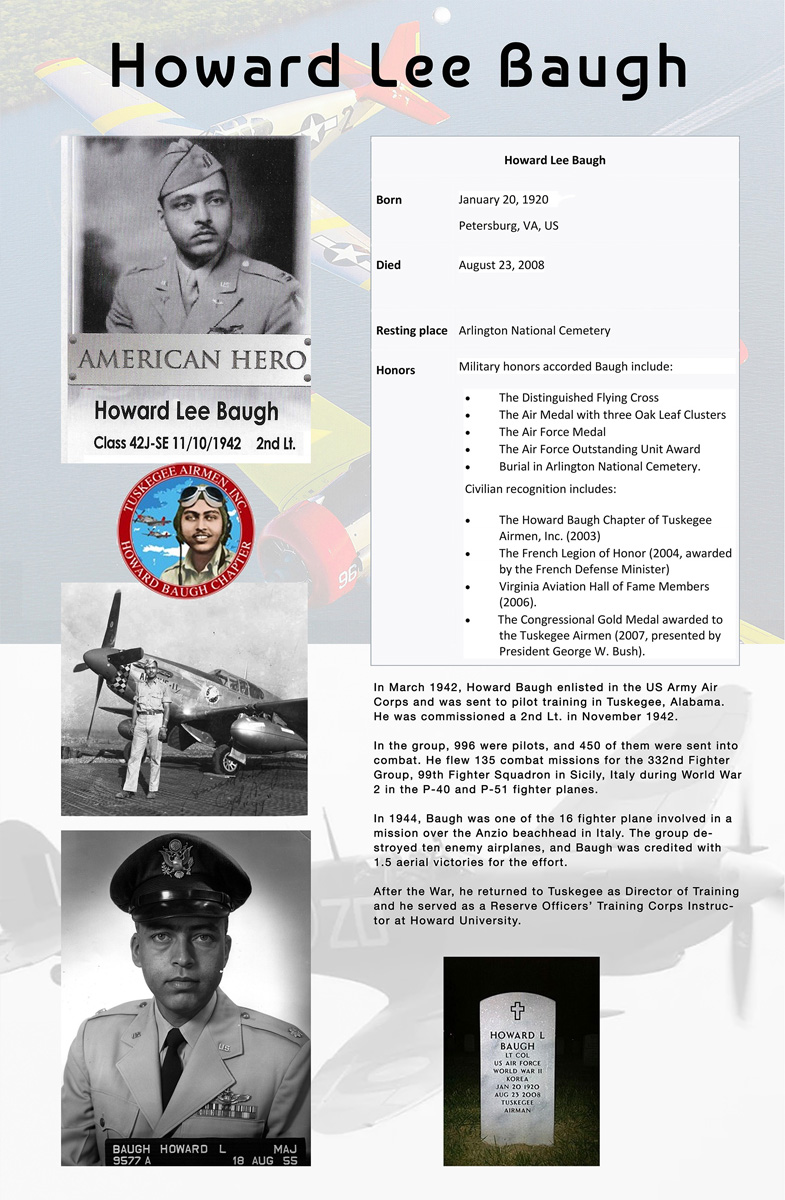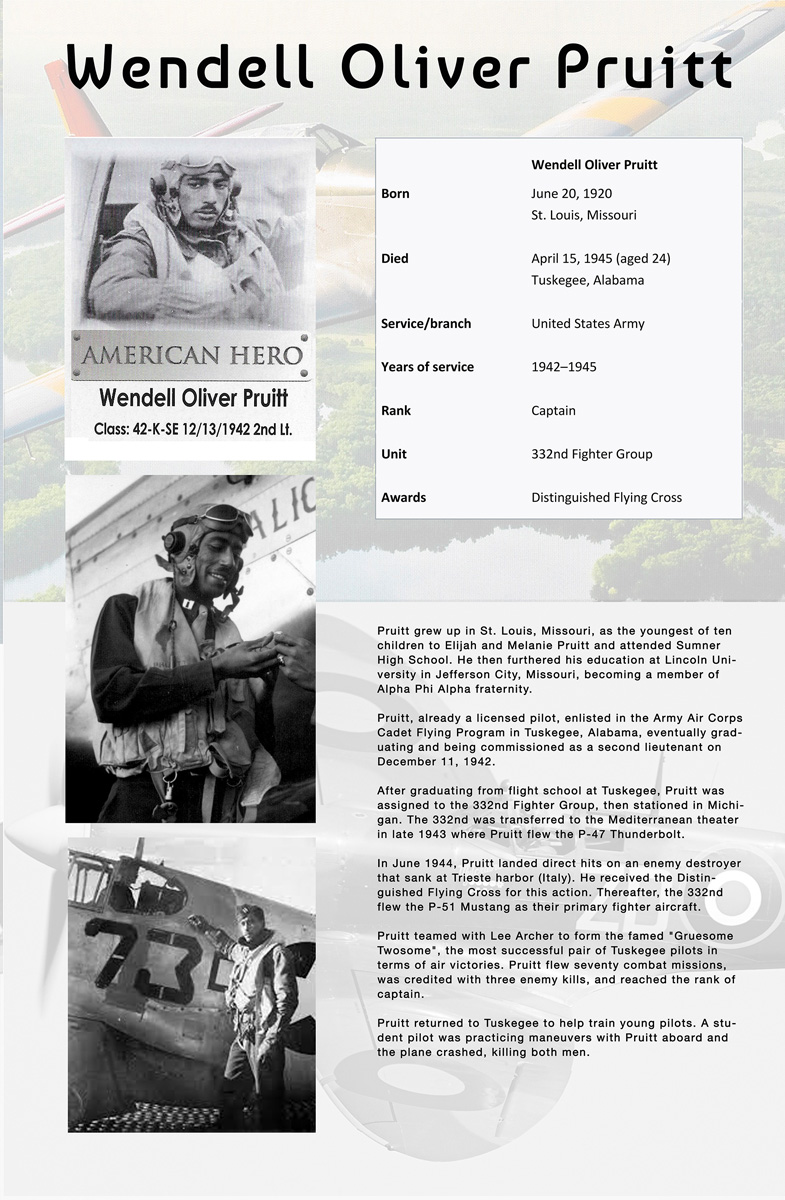
12: America’s First Black Tuskegee Airmen
September 27 - October 3, 2021
Gallery Director Essay
All exhibits have a history and 12: America’s First Black Tuskegee Airmen is no exception. I had been teaching at UD all of one year and found myself invited to visit with Captain Robert Martin in 2000 at the then Central Alternative High School in downtown Dubuque. What Captain Martin had to say was amazing. That was my initial exposure to the Tuskegee Airmen. For me (and certainly others), the name ‘Tuskegee’ did not have a positive ring, given the abusive biological experiments that occurred on Black males there from 1932-1972. But at Central, the students (and their teachers) were awesome. They researched the Tuskegee Airmen, published a book, and in particular focused on the Dubuquer, Captain Martin. I was in awe and learned so much during that assembly.
Which brings us to this show. From that point, I knew I wanted to have an exhibit to begin the job of educating our fellow Dubuquers about the Airmen in general and about Captain Robert Martin in particular. Fast forward to Covid-laden 2021 and Rick Ernst (CSM, USA, Ret), Director of the Sergeant Jeffrey B. Dodge Veterans Center and Veterans Admission and Assistance Coordinator at UD. All excited, he called me about the potential to bring the Rise Above organization to highlight the Tuskegee Airmen and introduce that history through interactive demos to our faculty, staff and student body. And to our community. President Jeff Bullock wanted this to be a year long strategy to spotlight the drive to name the Dubuque Regional Airport terminal after Captain Martin in Spring 2022. So Heritage Center Director Tom Robbins organized a University/Community committee with a number of events planned. By the time you read this, the kick-off event for the Captain Robert L. Martin Black Heritage Tribute Initiative will have occurred on Monday, September 27, beginning a week-long Rise Above event and this exhibit.
We could have taken various approaches to this exhibit at the Bisignano, but the outcome was always clear. We wanted to focus on the University’s educational mission and its focus on addressing issues of diversity. To these ends there are many to be recognized. Our exhibit mirrors the amazing work done by the CAF Red Tail Squadron in Red Wing Minnesota. It also draws heavily on the work by the Central Alternative High School students, the book Memories of Twelve Iowa WWII Veterans edited by Jane Cox, and assistance by Captain Martin’s daughter, Gabrielle.
With 992 Black pilots who participated in training at Tuskegee and who later flew P-39, P-40, P-47 and P-51 aircraft in more than 15,000 sorties in North Africa, Sicily and Europe, it was decided to reinforce the CAF Red Tail Squadron’s work in educating the public. We picked 12, ergo the numerical name of the show.
Perhaps in the future, we will revisit this exhibit with the “Iowa 12”, 12 from Iowa who served in the famed all-Black 99th Fighter Squadron, 332nd Fighter Group and 477th Bombardment Group from 1941-1945. And while that exhibit will have to wait for another day, let us recognize their names here:
William V. Bibb (Ottumwa);
James E. Bowman (Des Moines);
Russell L. Collins (Cedar Rapids);
Maurice V. Esters (Webster City);
Joseph P. Gomer (Iowa Falls);
Robert L. Martin (Dubuque);
George R. Miller (Des Moines);
Clarence A. Oliphant (Council Bluffs);
Robert M. Parkey (Des Moines);
Luther H. Smith (Des Moines);
Thurman E. Spriggs (Des Moines);
Robert W. Williams (Ottumwa);
Many thanks to Noah Bullock, Assistant Director of the Bisignano Art Gallery, for hanging the exhibit and giving tours to Dubuque’s middle-school students. Also, we appreciate the contributions made by the Captain Robert L. Martin Black Heritage Tribute Initiative Committee, whose members are listed here:
Thomas Robbins, Chair
Angela Brandel, Noah Bullock, Ryan Byrnes, Korissa Clark, Todd Dalsing, Jarrett P. Daniel, Dishon L. Deering, Kristen Eby, Nelson Edmonds, Rick Ernst, Alan Garfield, Jim Gunn, Brian Hallstoos, Taryn Kafer, Elainee Koehler, Brigette Kyei Nimakoh, Michael Phillips, Cheryl Sheldon, James Sizer, Karin Spisak, R.R.S. Stewart and Greg Wolf.
Alan Garfield
Director, Bisignano Art Gallery
Exhibit Poster
The Tuskegee Airmen are part of World War II history, though often just footnoted. These men trained at the U.S. Army airfield near Tuskegee, Alabama and at the Tuskegee Institute. The Allies called these airmen “Red Tails” or “Red Tail Angels” because of the distinctive red paint applied on the tail section of their P-51 Mustang fighter planes. (You’ll notice the prominent red in the graphics). It’s hard not to draw racist conclusions when you understand that none of the planes the Tuskegee Airmen flew were new planes.












